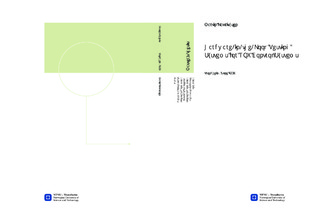Hardware-in-the-Loop Testing Systems for ROV Control Systems
Master thesis
Permanent lenke
http://hdl.handle.net/11250/238916Utgivelsesdato
2014Metadata
Vis full innførselSamlinger
- Institutt for marin teknikk [3434]
Sammendrag
The use of ROVs has increased in the last decades and today advanced underwater vehicles are used in a wide array of oshore, military and scientific applications. To further improve the usefulness of ROVs modern control systems, such as DP systems, are employed to decrease the strain on the ROV operator and perform tasks faster, safer and cheaper. These control systems are implemented using computers, and as such are vulnerable to software and hardware malfunctions. To prevent these errors from occurring, and minimizing the effect of them if they do occur, thorough testing is necessary. This thesis will addresses the uses of Hardware-in-the-Loop testing of Dynamic Positioning systems and other control systems found in ROVs. The different functions of HIL testing and how it can help reduce cost and development time while improving safety compared to more traditional software testing will be discussed. The thesis also gives a short introduction to relevant topics such as Dynamic Positioning systems and how modern software implementations make control systems vulnerable.The mathematical models for ROVs, sensors and other relevant parts of a simulation system is presented, as well as the structure and characteristics of the current systems being used at NTNU.Improvements to the existing HIL system is performed, and such features as Software-in-the-Loop testing, sensor noise, umbilical forces and model uncertainty is implemented. In addition there are several improvements the user interfaces.A sea trial using the R/V Gunnerus and ROV Minerva were performed, and the results logged from the cruise are used to compare the results from simulations to real life data. This is done to evaluate how good results from a HIL simulator can be, and to predict weaknesses and suggest further improvements in the current HIL system.
